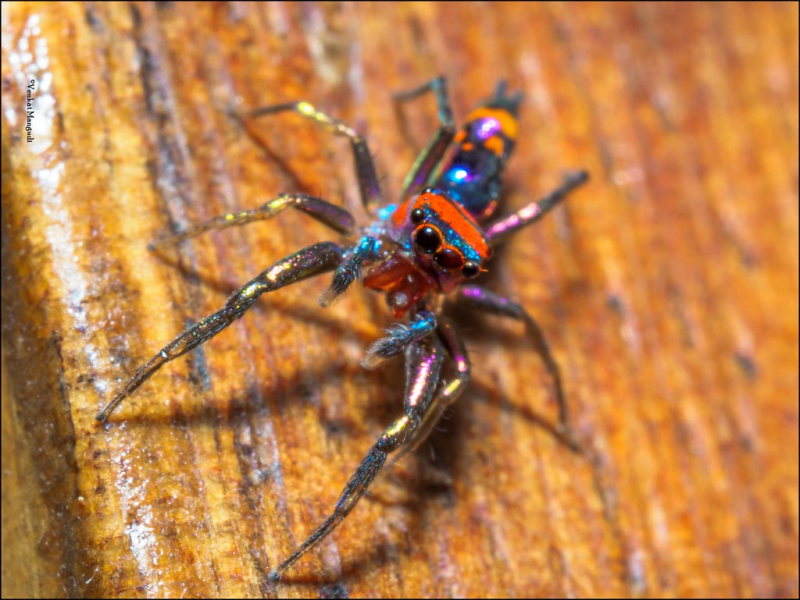Elegant Golden Jumping Spider
The Elegant Golden Jumping Spider is known by a specific scientific name, just like the majority of spider species. The scientific name for the elegant golden jumping spider is Chrysilla lauta. From Vietnam to Burma and China, this species of spider can be found in rainforests. The elegant golden jumping spider has been known since 1887, however, it has only ever been described from male specimens.
The Elegant golden jumping spider is renowned for its stunning colors. The males, meanwhile, have an orange-red carapace and an extremely slim body. You'll see an obvious narrow bluish-white and the iridescent band just between their eyes. They differ from other jumping spider species in that it has a strong chelicera that doesn't point forward. The lengthy scutum of its opisthosoma is dark brown in color and covered in rich golden hair. Elegant golden spiders are brilliantly colored and have long, brownish-yellow legs. The Elegant golden jumping spider is quite a modest creature in terms of size.
The graceful golden jumping spider is quite a modest creature in terms of size. Although there is little information on its size, it is estimated that this species of spiders is 5mm long. This spider just doesn't measure up to others with an average size of 15 to 21 mm. Its striking and sophisticated colors are what set it apart from other jumping spider species.
We adore the exquisite golden spider's desire to flourish and live in practically any environment. Our animal companions can live in almost any environment, including habitats in savannas and grasslands as well as temperate and tropical forests. Having said that, they are frequently seen in garden foliage, on vertical surfaces like window glass and walls, as well as in meadows and woodlands. So, it wouldn't be a bad idea to investigate around these areas if you're hoping to catch one for yourself.
The elegant golden jumping spiders are skilled hunters known for their impressive jumping abilities. They can capture smaller insects as well as larger ones like grasshoppers and crickets. Unlike traditional spiders, they don't use webs for hunting, relying on their quick jumps instead. In captivity, it's essential to keep them individually, as they may end up cannibalizing each other. While their primary diet consists of feeder insects like flies, crickets, roaches, and mealworms, they also consume pollen and nectar in the wild. However, certain insects like beetles and fireflies should never be fed to these spiders, as they can be harmful or even lethal. In the wild, their lifespan is around one to two years, but in captivity, they can live for two to three years, with females generally having a longer lifespan than males.













